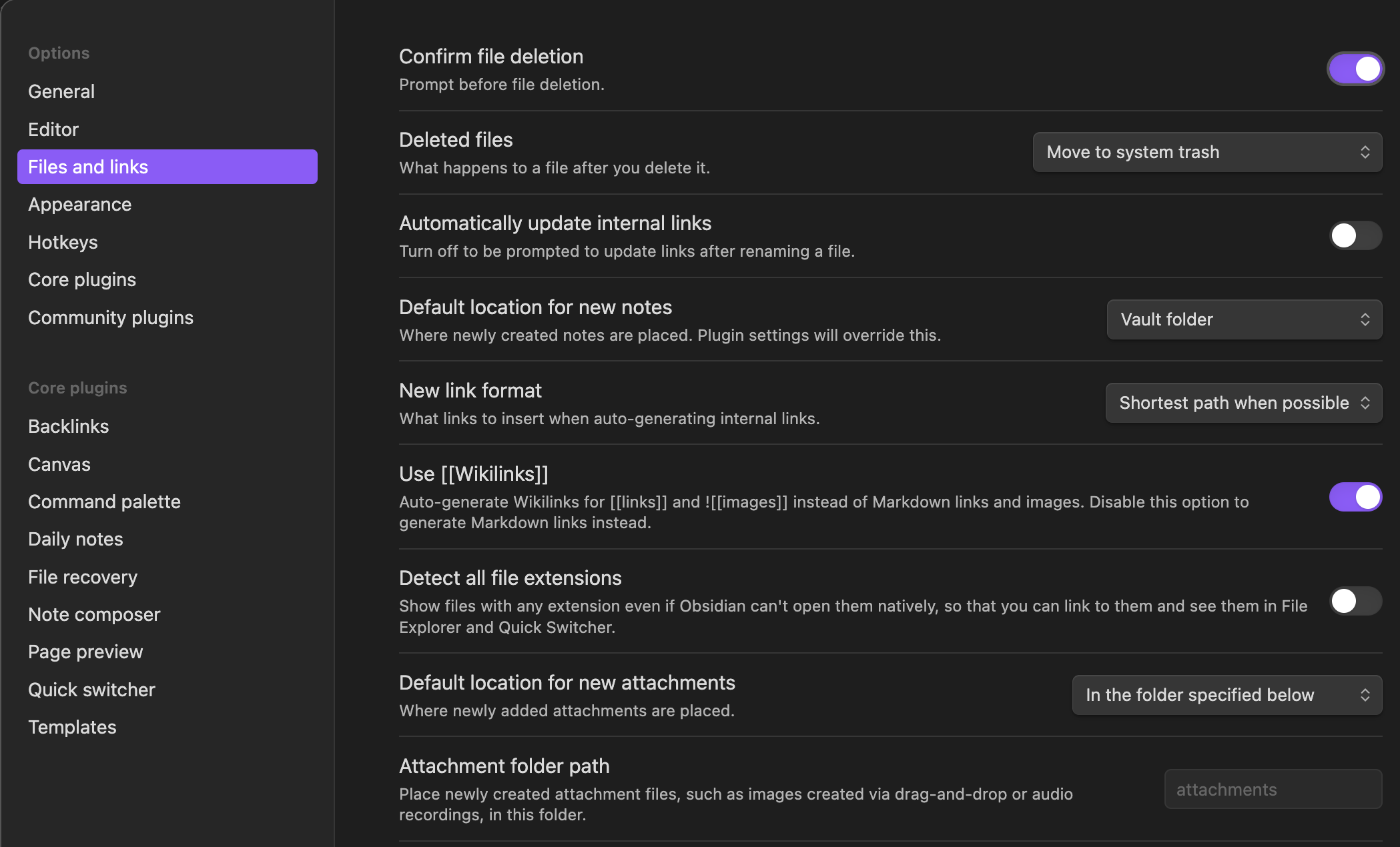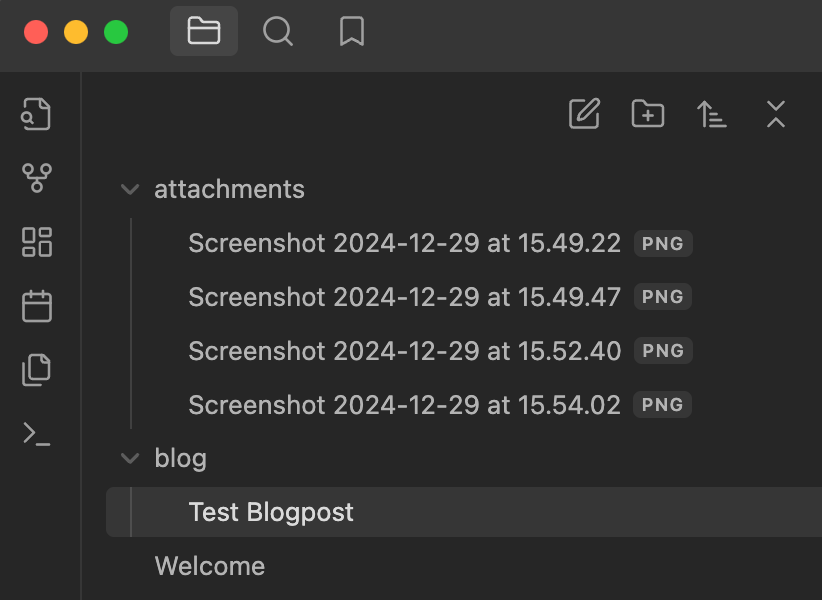How I've setup Obsidian for blogging
I've stumbled across this during scrolling through different youtube videos. Networkchuck showed here how he is using Obsidian for blogging -> I started a blog... in 2024 and here is his Blogpost
Setup of the Obsidian Vault
- Create a specific directory where all blogposts are located
- Images should be located in a specific directory (see below)


Hugo Setup
Create a new site
hugo new site testblog27122024git init
Congratulations! Your new Hugo site was created in /Users/harry/Developer/testblog27122024.
Just a few more steps...
1. Change the current directory to /Users/harry/Developer/testblog27122024.
2. Create or install a theme:
- Create a new theme with the command "hugo new theme <THEMENAME>"
- Or, install a theme from https://themes.gohugo.io/
3. Edit hugo.toml, setting the "theme" property to the theme name.
4. Create new content with the command "hugo new content <SECTIONNAME>/<FILENAME>.<FORMAT>".
5. Start the embedded web server with the command "hugo server --buildDrafts".
See documentation at https://gohugo.io/.
Add a theme (PaperMod)
git submodule add --depth=1 https://github.com/adityatelange/hugo-PaperMod.git themes/PaperMod
Cloning into '/Users/harry/Developer/testblog27122024/themes/PaperMod'...
remote: Enumerating objects: 139, done.
remote: Counting objects: 100% (139/139), done.
remote: Compressing objects: 100% (98/98), done.
remote: Total 139 (delta 36), reused 121 (delta 36), pack-reused 0 (from 0)
Receiving objects: 100% (139/139), 249.18 KiB | 19.17 MiB/s, done.
Resolving deltas: 100% (36/36), done.
Create the directories under the Hugo site
- under the subdirectory
content-> create the new directoryposts - under the subdirectory
static-> create the new directoryimages
Scripts for required for blogging
My Setup is different. Therefore I am showing here the scripts
The sync script
- $sourcePath is the path to the Obsidian Vault and the subdirectory for the blog posts
- $destinationPath is the path to -> Hugo content/posts
#!/bin/bash
set -euo pipefail
# Change to the script's directory
SCRIPT_DIR="$(cd "$(dirname "${BASH_SOURCE[0]}")" && pwd)"
cd "$SCRIPT_DIR"
# Set variables for Obsidian to Hugo copy
sourcePath='/Users/harry/Developer/testvault/blog/'
destinationPath="/Users/harry/Developer/testblog27122024/content/posts/"
# Step 2: Sync posts from Obsidian to Hugo content folder using rsync
echo "Syncing posts from Obsidian..."
if [ ! -d "$sourcePath" ]; then
echo "Source path does not exist: $sourcePath"
exit 1
fi
if [ ! -d "$destinationPath" ]; then
echo "Destination path does not exist: $destinationPath"
exit 1
fi
rsync -av --delete "$sourcePath" "$destinationPath"
The image rewrite python script
If you are using a subdirectory on you webserver, you might need to change the line with
mark_downimagee.g.markdown_image = f"[Image Description](/blog/images/{image.replace(' ', '%20')})"
import os
import re
import shutil
# Paths
posts_dir = "/Users/harry/Developer/testblog27122024/content/posts"
attachments_dir = "/Users/harry/Developer/testvault/attachments"
static_images_dir = "/Users/harry/Developer/testblog27122024/static/images"
# Step 1: Process each markdown file in the posts directory
for filename in os.listdir(posts_dir):
if filename.endswith(".md"):
filepath = os.path.join(posts_dir, filename)
with open(filepath, "r") as file:
content = file.read()
# Step 2: Find all image links in the format 
images = re.findall(r'\[\[([^]]*\.png)\]\]', content)
# Step 3: Replace image links and ensure URLs are correctly formatted
for image in images:
# Prepare the Markdown-compatible link with %20 replacing spaces
markdown_image = f"[Image Description](/images/{image.replace(' ', '%20')})"
content = content.replace(f"[[{image}]]", markdown_image)
# Step 4: Copy the image to the Hugo static/images directory if it exists
image_source = os.path.join(attachments_dir, image)
if os.path.exists(image_source):
shutil.copy(image_source, static_images_dir)
# Step 5: Write the updated content back to the markdown file
with open(filepath, "w") as file:
file.write(content)
print("Markdown files processed and images copied successfully.")
Writing a post and sync it to Hugo
- write a new blogpost in Obsidian in the subfolder 'blog'
- run the
sync_script.sh - run the
images.pypython script - run
hugoto generate the static html pages - sync the
publicdirectory to you webserver